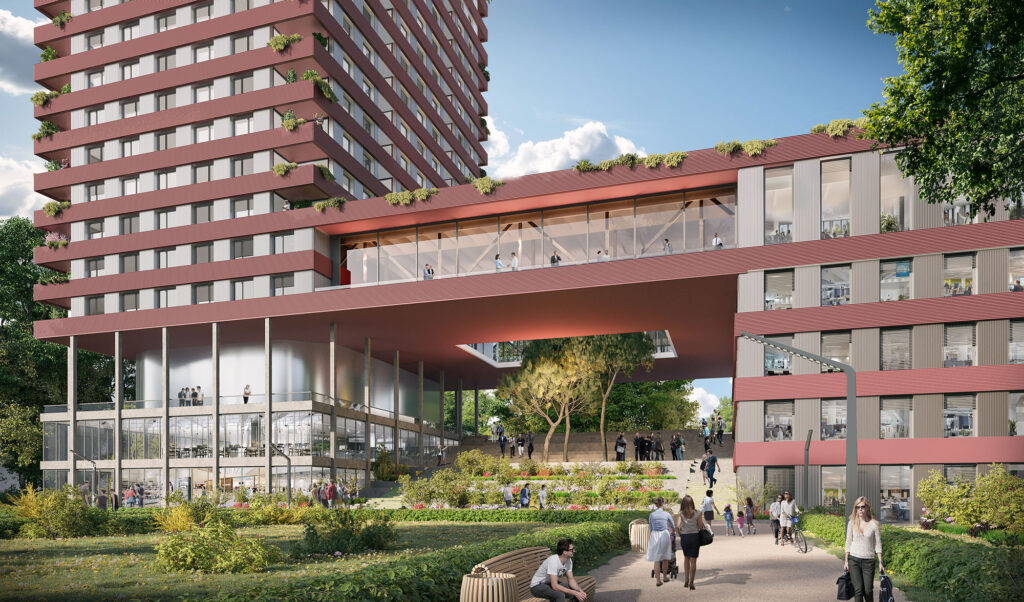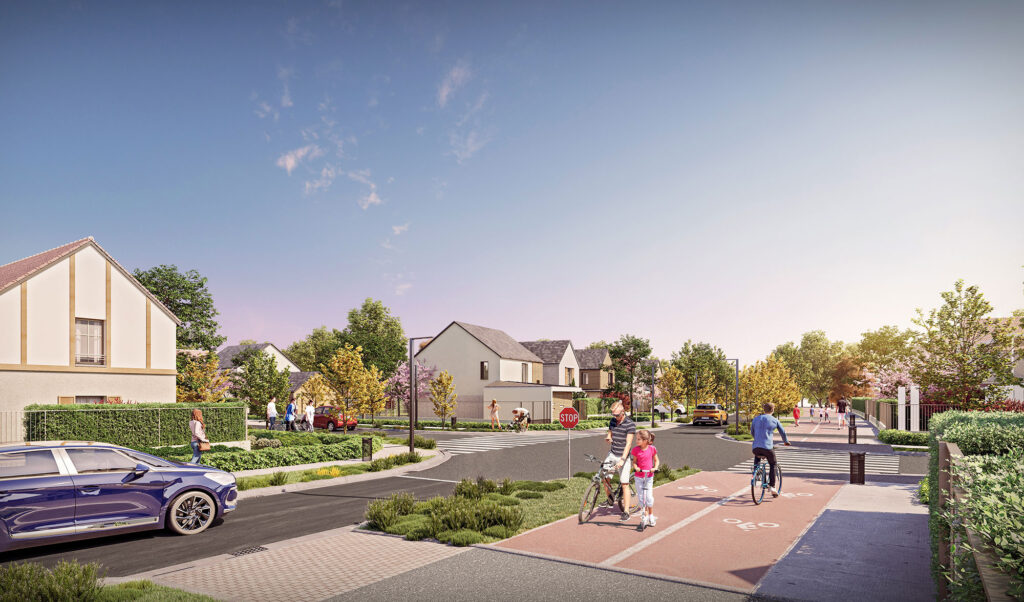3D models are particularly popular with real estate professionals because of the high return on investment they represent. Measuring the ROI of 3D models means comparing the benefits derived from this tool with your initial investment.
This indicator evaluates the financial success of your real estate project by integrating the impact of using this interactive technology.
We'd like to show you how to measure the ROI of 3D real estate models, and how to make the most of them as a sound investment.
Profitability of mock-ups through production optimization

The use of 3D models implies initial investments of varying amounts, but the results remain consistent. To ensure that your projects are profitable, you need to integrate 3D models into the entire process.
This ranges from simple pre-project design to the overall management of real estate programs, right through to completion.
Efficient design tool
A 3D real estate model is a graphic representation of the exterior of a property in three dimensions. It highlights the architectural aspect of the building or house, usually from a pedestrian point of view.
Also known as an orbital model, it is distinguished by its ability to take a complete tour of the property. As an architectural tool, it is ideal for use at the project design stage, bringing your real estate project to life.
To design a 3D model, you need to call on the services of a 3D graphic designer. He or she will then model the property based on the 2D plans, sketches and sketches provided. This will enable any design inconsistencies to be detected at an early stage. Design errors can be, for example :
- Inadequate structural sizing;
- A lack of precision in planning the work;
- The presence of architectural conflicts between different building components.
These various errors can be avoided, or at least reduced, thanks to a realistic, technical presentation of the project. The 3D real estate model therefore aims to improve the safety and durability of your future real estate projects at an early stage, without having to incur huge expenses.
Internal communication tool
In addition to optimizing the project design process, 3D models also facilitate communication between the various parties involved. Architects, engineers, site supervisors, builders and all other project stakeholders all start from the same starting point, thanks to this tool.
In addition to the various technical information available, the 3D model provides a realistic overview of the project.
During the construction phase, 3D models are a good investment. The time required to complete the work is speeded up, as everyone involved knows exactly what they have to do.
This seamless collaboration reduces errors on the job site. You'll be able to bring your project to market on time, and at a reasonable price.
Real estate project management technology
The 3D model is a real productivity booster thanks to improved management of your real estate projects.
In fact, it can be connected to a CRM to facilitate the completion of numerous tasks. In fact, this customer relationship management tool offers a multitude of advantages, such as :
- Data management: management of real estate programs (prices, allocations, availability, appendices), management and updating of address books, management of contacts and sales opportunities;
- Marketing tracking: gathering the data needed for marketing analysis to optimize customer targeting. For example, data on leads, batch sales, reservations, etc. ;
- Accessibility: access to data at any time from any connected device.
The 3D model can therefore accompany you in your daily tasks, making this technology an excellent investment. By exploiting it in the right way, you can reap the maximum benefits.
ROI of 3D real estate models thanks to reduced overall costs
3D real estate models ensure a good return on investment by reducing real estate project costs. This multi-purpose tool can be used at every stage of your project, considerably reducing operating costs.
Design costs
The development of real estate projects was generally based on 2D models (sketches) and 3D physical models.
With the democratization of digital technology, project design has moved on to digital modeling. This virtual 3D model has the advantage of being faster and less costly.
Indeed, it can be addressed to all stakeholders, without necessarily needing to elaborate further 3D visuals. Modifications are also simpler and quicker than on a physical model, for example, extending a door or changing the color of the roof.
Construction costs
Thanks to efficient planning, the 3D model considerably reduces errors on site.
Between the excessive complexity of the project, the lack of cooperation between stakeholders and the lack of information from builders, project completion is not immune to construction errors.
This means that rectifications have to be made, delaying completion of the project and incurring additional resources. Such expenses are avoided with 3D models. It's much cheaper to make modifications on screen than on site.
It should be noted, however, that a 3D model remains a complementary tool in the construction process. Stakeholders must rely primarily on more technical tools such as the BIM model.
Marketing costs
The 3D model can be used as a marketing tool. Featuring an interactive function, it allows prospects to rotate the property 360° (from right to left and vice versa).
He can then visualize the various aspects of the project, including the surroundings such as gardens, fencing and alleyways. This speeds up the decision-making process, making it easier to market your property.
In some cases, 3D models can easily replace other communication expenses, allowing you to better balance your budget.
ROI of 3D models and real estate transactions

Finally, you can measure the ROI of your 3D model by evaluating the benefits it has on the sale of your real estate projects.
Marketing profitability
The 3D model or orbital model is an attention-grabbing tool. In a saturated market, customers are no longer content to just visualize, they want to feel emotions and easily understand what they're seeing.
The realistic, aesthetic look of a 3D model makes it easy to achieve this goal. Including it in your real estate marketing plan will help you reach your target audience and attract more customers.
It's a good idea to put it on your website and social networks to increase your online visibility.
Customer satisfaction
The 3D real estate model enhances the customer's overall experience, enabling him to :
- Take a complete 360° tour of the building;
- Visualize the different floors of the building using the cut-out orbital model;
- Zoom in and out on specific elements such as roofs, balconies or windows;
- Find out about prices and available lots.
These features help potential buyers to make informed decisions. When it comes to calculating profitability, customer satisfaction is an important element to assess. Although it's an intangible benefit, it will go a long way to building customer loyalty.
Once satisfied, they will recommend you to other potential customers, enabling you to generate additional sales. All this contributes to increasing the ROI of your 3D models.
Good brand image
In addition to offering customers an exceptional experience, 3D models help to project a positive image of your company. In fact, using this tool in your real estate development is a sign of professionalism and transparency.
Thanks to its high degree of precision, a 3D model reduces the hesitations of potential buyers. What's more, you can integrate a virtual tour to allow them to visit the interior spaces.
By boosting customer confidence, you improve your brand image, which in turn boosts your return on investment.
Let us create your 3D real estate models








